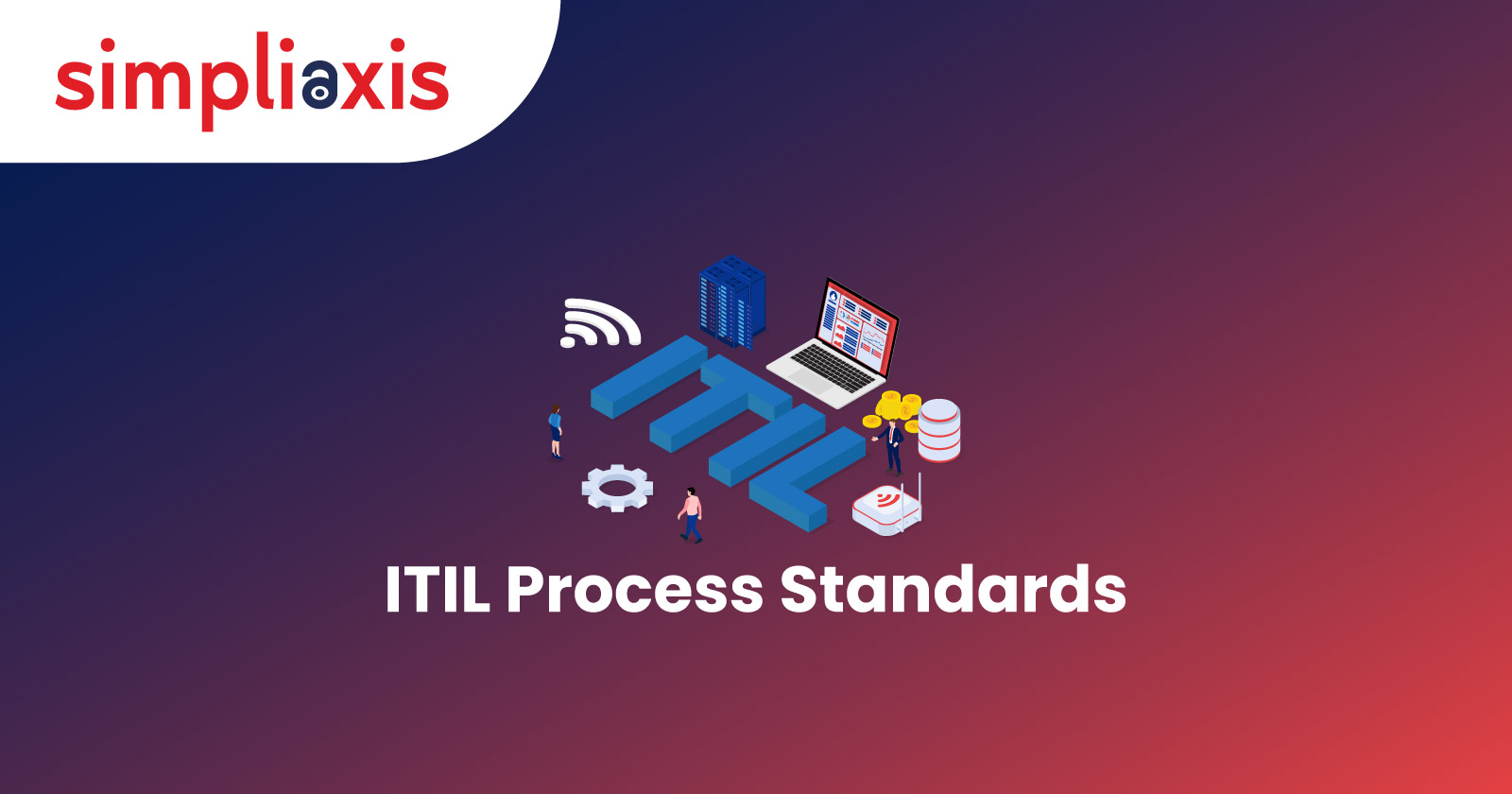The Information Technology Infrastructure Library (ITIL) acts as a structured framework for the management of IT operations. Originating in the 1980s, it was created by the Central Computer and Telecommunications Agency (CCTA) which belongs to the British government. This article delves into the intricacies of ITIL process standards, exploring its core concepts, learning paths, practical applications, certification levels, and the significance of Configuration Management Database (CMDB) within the ITIL framework.
What is ITIL?
Originally crafted by the UK government's Central Computer and Telecommunications Agency (CCTA), ITIL is a comprehensive framework that harmonizes IT services with business requirements. Over time, it has become a universally acknowledged IT service management benchmark.
Offering a methodical strategy, ITIL facilitates the meticulous planning, delivery, and maintenance of IT services to address business objectives aptly. Initially comprising over 30 volumes, the ITIL framework has gradually evolved, assimilating best practices from diverse sources, including those of vendors worldwide.
Core Components of ITIL
The primary objective of ITIL is to aid IT organizations in providing higher-quality IT services at reduced costs. It delineates processes, procedures, tasks, and checklists that are not tailored to specific organizations or technologies.
ITIL's life cycle comprises the following five stages:
1. Service Strategy: This stage focuses on understanding the needs of customers and defining IT services to meet those needs.
2. Service Design: Here, IT services are designed based on the requirements identified in the service strategy stage, ensuring they are scalable, reliable, and cost-effective.
3. Service Transition: This stage involves transitioning novel or implemented changes to the production environment while minimizing disruption to existing services.
4. Service Operation: It deals with the day-to-day management of IT services, ensuring they meet agreed-upon service levels and deliver value to customers.
5. Continual Service Improvement: This stage emphasizes ongoing evaluation and improvement of IT services to enhance efficiency, effectiveness, and customer satisfaction.
Read More:5 Stages of ITIL Service Lifecycle
ITIL Learning Paths
The ITIL (Information Technology Infrastructure Library) framework serves as a cornerstone for IT administrators seeking to elevate service delivery timelines and enhance customer satisfaction. It provides a defined approach to IT service management, offering best practices and guidelines for efficient service operations.
Diverse learning paths within the ITIL framework cater to varying skill levels and career aspirations:
1. ITIL 4 Foundation: Positioned as the entry-level certification, the ITIL 4 Foundation course acts as a springboard for individuals embarking on their IT service management journey. It equips participants with fundamental knowledge and understanding of ITIL concepts, laying a solid groundwork for career advancement.
2. ITIL 4 Certification Scheme: This scheme encompasses three primary designation paths, each tailored to different career trajectories and organizational roles:
- Managing Professional (MP): Designed for professionals seeking to delve deeper into ITIL practices and methodologies. It comprises a series of modules focusing on practical application and implementation of ITIL principles.
- Strategic Leader (SL): Geared towards individuals aiming to develop strategic insight and leadership skills within the IT service management domain. It emphasizes broader organizational strategies and aligning ITIL practices with business objectives.
- Practice Manager (PM): Targets professionals responsible for overseeing specific ITIL practices within an organization. It equips participants with the necessary knowledge and tools to optimize service delivery processes and drive continuous improvement.
3. ITIL Expert: Positioned as an advanced certification, ITIL Expert encompasses comprehensive knowledge of ITIL processes and practices across various disciplines. It demonstrates a high level of proficiency in implementing ITIL methodologies to streamline service management operations and enhance organizational efficiency.
4. ITIL Master: Representing the pinnacle of ITIL certification, ITIL Master accreditation acknowledges mastery of advanced ITIL concepts and practices. It requires candidates to demonstrate exceptional expertise in analyzing, implementing, and managing complex IT service management scenarios, showcasing their ability to drive innovation and overcome organizational challenges.
By pursuing these ITIL learning paths, professionals can acquire the necessary skills and credentials to excel in IT service management roles, contributing to organizational success and fostering continuous improvement in service delivery.
Also, check:
What Do ITIL Process Standards Mean in Practice?
ITIL process standards serve as a roadmap for organizations to streamline their IT service management practices. By adopting ITIL, businesses can benefit in several ways:
1. Improved Service Quality: ITIL helps organizations deliver consistent, high-quality services by defining standardized processes and best practices.
2. Enhanced Customer Satisfaction: By aligning IT services with business objectives and customer needs, ITIL helps improve customer satisfaction and loyalty.
3. Cost Reduction: ITIL encourages efficient resource utilization and cost-effective service delivery, which reduces operational costs.
4. Risk Mitigation: ITIL emphasizes proactive risk management and problem resolution, reducing the likelihood of service disruptions and downtime.
5. Increased Agility: With its focus on continual improvement, ITIL enables organizations to adapt to changing business requirements and technological advancements more effectively.
Levels of ITIL Certification
ITIL certification is available at multiple levels, each targeting specific roles and ITIL Skill levels within the IT service management domain. These levels include:
- Foundation: Introduces candidates to the basic concepts and terminology of ITIL.
- Practitioner: Focuses on applying ITIL principles in practical scenarios, emphasizing hands-on experience.
- Intermediate: Offers specialized modules covering various aspects of ITIL processes and practices.
- Expert: Recognizes individuals who have achieved a deep understanding of ITIL and demonstrated proficiency in its application.
- Master: The highest level of ITIL certification, reserved for experts who have made significant contributions to the field of IT service management.
Explore the tiers of levels of ITIL Certification and unlock the keys to optimized IT service management. Dive deeper into each level and elevate your organization's efficiency today!
What is CMDB, and Where Does It Stand Within the ITIL Framework?
The Configuration Management Database (CMDB) is a centralized repository that stores information about all configuration items (CIs) within an organization's IT infrastructure. This includes hardware, software, documentation, and relationships between different components. In the ITIL framework, the CMDB plays a crucial role in supporting various processes, such as:
- Change Management: CMDB provides a comprehensive view of the IT environment, facilitating effective change planning and impact analysis.
- Incident Management: By maintaining accurate configuration data, CMDB assists in pinpointing the underlying reasons for incidents and restore services more quickly.
- Asset Management: CMDB is a foundation for asset tracking and inventory management, enabling organizations to optimize resource utilization and reduce costs.
- Service Continuity: CMDB supports disaster recovery and business continuity planning by providing up-to-date information about critical IT assets and dependencies.
In summary, CMDB is an essential component of the ITIL framework, enabling organizations to manage their IT infrastructure more efficiently and effectively.
Lastly!
In today's rapidly evolving business landscape, effective IT service management is critical for organizations to stay competitive and meet customer expectations. By embracing ITIL process standards, businesses can streamline their IT operations, enhance service quality, and drive business value. Whether you're a seasoned IT professional or just starting your journey, mastering ITIL concepts can open new doors to career opportunities and contribute to your professional growth.
Simpliaxis offers a range of professional courses in ITIL Certification, & other related Areas to support your career advancement. Join us today and start on a journey towards IT service excellence!













 +1-361-998-9988
+1-361-998-9988


